In today’s digital age, crafting the perfect call-to-action (CTA) is essential for businesses looking to increase their conversion rates and drive engagement. A well-designed CTA not only encourages users to take a specific action, but also plays a crucial role in guiding them through the customer journey. As a team of marketing professionals, we understand the importance of creating compelling CTAs that resonate with your target audience and drive results. In this article, we will share our top tips and examples for crafting the perfect call-to-action that will help you achieve your marketing goals. From choosing the right language and design elements to optimizing placement and tracking performance, we will cover all aspects of creating an effective CTA strategy. Whether you’re looking to boost your website’s sign-up rate, increase sales, or drive traffic to a specific landing page, implementing these best practices will set you on the path to success. Join us as we dive into the world of CTAs and learn how to create irresistible calls-to-action that will captivate your audience and drive meaningful actions.
We use clear, concise language.
When we aim to deliver a compelling call-to-action (CTA), it is crucial to communicate our message effectively using clear, concise language. By employing simple and straightforward wording, we can ensure that our audience easily understands what action we want them to take. Ambiguity or verbosity in our CTAs can lead to confusion and hinder the conversion process. Therefore, we must focus on crafting concise and direct CTAs that leave no room for misinterpretation. Clear language not only enhances the user experience but also increases the likelihood of achieving the desired outcome.
Our CTAs stand out visually.
In addition to utilizing clear and concise language in our CTAs, we also pay close attention to the visual elements that make them stand out. The visual appeal of a call-to-action is just as important as its messaging. Through the strategic use of contrasting colors, bold fonts, and eye-catching design elements, we ensure that our CTAs command attention and guide users towards their intended actions. By incorporating visually striking elements that complement the overall design of our website or marketing materials, we create CTAs that not only attract the viewer’s gaze but also prompt them to engage with our content. This visual emphasis enhances the overall effectiveness of our calls-to-action and reinforces the desired user response.
We create a sense of urgency.
To maximize the impact of our call-to-action strategies, we understand the significance of cultivating a sense of urgency in our messaging. By creating a compelling narrative that emphasizes time-sensitive offers or limited availability, we aim to motivate our audience to act promptly. Incorporating phrases such as “Limited time only” or “Act now to secure your spot” can instill a sense of FOMO (fear of missing out) in users, prompting them to take immediate action. This psychological trigger taps into the innate human desire to seize opportunities and avoid potential losses, driving conversions and engagement. By leveraging the power of urgency in our calls-to-action, we effectively encourage decisive responses from our audience and facilitate meaningful interactions that align with our objectives.
Our CTAs are action-oriented.
In crafting our CTAs, we prioritize action-oriented language to prompt immediate responses from our target audience. By employing verbs that inspire action, such as “Discover,” “Join,” “Shop Now,” or “Subscribe,” we aim to direct users towards the desired interaction swiftly. These dynamic verbs serve to engage users actively, guiding them towards the next step in their journey and prompting them to take decisive action. Through the strategic use of action-oriented CTAs, we aim to enhance user engagement, drive conversions, and ultimately achieve our marketing goals effectively.

We prioritize mobile responsiveness.
Ensuring mobile responsiveness remains a cornerstone of our approach to crafting compelling CTAs. With the increasing reliance on mobile devices for online interactions, we recognize the critical importance of delivering a seamless user experience across all screen sizes. By adopting a mobile-first mindset, we guarantee that our CTAs are not only visually appealing but also fully functional and easily accessible on smartphones and tablets. Prioritizing mobile responsiveness enables us to cater to the diverse preferences of our audience and engage users effectively regardless of the device they choose to use, thereby optimizing the overall impact of our call-to-action strategies.
We A/B test for optimization.
To enhance the performance of our CTAs, we implement A/B testing methods to optimize their effectiveness in driving user engagement and conversions. Through A/B testing, we conduct experiments by presenting variations of our CTAs to different segments of our audience, allowing us to analyze which versions generate the most favorable outcomes. By systematically comparing the results of these tests, we can identify the most impactful design elements, messaging strategies, or placement options that resonate with our target audience. This iterative process of testing and refining our CTAs based on data-driven insights empowers us to continually improve their performance and tailor them to meet the evolving needs and preferences of our users.
We personalize our CTAs effectively.
In tailoring our CTAs effectively, we strategize by leveraging user data and behavior insights to create personalized experiences that resonate with individual preferences. By customizing our CTAs based on factors such as demographics, past interactions, and browsing history, we can deliver more relevant and targeted messages to our audience. This personalized approach not only enhances user experience but also increases the likelihood of capturing their attention and encouraging desired actions. By understanding the unique needs and interests of our users, we can craft CTAs that speak directly to them, ultimately driving higher engagement and conversion rates.
We align CTAs with goals.
To ensure that our Call-to-Actions (CTAs) align with our objectives, we meticulously analyze our business goals and user expectations. By clearly defining our desired outcomes, whether it’s increasing sales, driving website traffic, or boosting newsletter sign-ups, we tailor our CTAs to guide users towards these specific actions. This strategic alignment enables us to create compelling and purpose-driven CTAs that resonate with our audience and lead them towards fulfilling our predefined goals. Through continuous monitoring and optimization, we fine-tune our CTAs to maximize their effectiveness in driving desired actions and achieving our overarching objectives seamlessly.
We utilize strong verbs.
In constructing our Call-to-Actions (CTAs) within our content, we emphasize the power and impact of using strong verbs to prompt immediate action from our audience. By employing assertive and dynamic verbs that convey urgency and decisiveness, we aim to capture the attention of our users and stimulate their engagement. Strong verbs such as “explore,” “discover,” “enhance,” or “transform” inject vitality and vigor into our CTAs, compelling users to take the desired step with a sense of purpose and motivation. This deliberate selection of potent verbs not only enhances the clarity and directness of our messaging but also instills a sense of vitality and energy that propels users towards fulfilling our intended objectives effectively.
We provide clear directions.
In guiding our audience towards taking action through our Call-to-Actions (CTAs), we prioritize the provision of clear and concise directions that facilitate swift and effective decision-making. By presenting straightforward instructions and eliminating ambiguity in our messaging, we ensure that users are able to comprehend and follow the required steps easily. Our commitment to offering explicit guidance enables users to navigate the desired course of action seamlessly, leading to enhanced usability and engagement. Clarity in our directions not only streamlines the user experience but also fosters trust and confidence in our offerings, reinforcing the effectiveness of our CTAs in driving desired outcomes.
In conclusion, crafting an effective call-to-action is a vital component in any marketing strategy. By implementing the right techniques and utilizing engaging language, we can guide our audience towards taking the desired action. Remember to keep the CTA clear, concise, and relevant to the content it accompanies. A/B testing can help in determining what resonates best with your audience. By employing these tips and examples, we can create compelling CTAs that drive conversions and enhance overall engagement with our audience. Let’s continue to refine our CTAs to optimize their impact and achieve our marketing goals.
FAQ
What are some key elements that make a call-to-action effective?
Some key elements that make a call-to-action effective include clear and concise language, a sense of urgency, a specific action to take, and a benefit or incentive for doing so. By using these elements, we can encourage our audience to act quickly and decisively, leading to a higher conversion rate and successful outcomes for our goals.
Can you provide examples of successful call-to-action phrases or buttons?
We have found that phrases like “Shop Now,” “Learn More,” and “Get Started” are effective in encouraging action from users. Additionally, buttons with contrasting colors, clear language, and a sense of urgency tend to perform well. By using these strategies, we have seen an increase in click-through rates and conversions on our website.
How can businesses tailor their call-to-action to specific target audiences?
We can tailor our call-to-action to specific target audiences by conducting thorough market research to understand their needs, preferences, and behaviors. By segmenting our audience based on demographics, psychographics, or behavior patterns, we can create personalized and targeted CTAs that resonate with each group. Utilizing data analytics and A/B testing can also help us refine our CTAs for maximum effectiveness. Ultimately, by understanding our audience’s motivations and pain points, we can craft compelling CTAs that drive action and engagement.
What are some common mistakes to avoid when crafting a call-to-action?
Some common mistakes to avoid when crafting a call-to-action include being too vague or generic, using weak language that doesn’t inspire action, not making the next steps clear and easy to follow, and not emphasizing the benefits of taking action. It’s important for us to be specific, use strong and compelling language, provide clear instructions, and highlight the value or rewards of clicking the call-to-action button. By avoiding these mistakes, we can create more effective and engaging calls-to-action that drive desired actions from our audience.
How can businesses track the success of their call-to-action and make improvements?
As a team, we can track the success of our call-to-action by monitoring key metrics such as conversion rates, click-through rates, and overall engagement. By analyzing this data, we can identify what is working well and where improvements are needed. Additionally, we can conduct A/B testing to compare different approaches and determine the most effective strategies. Regularly reviewing and adapting our call-to-action based on this information will help us optimize its performance and drive better results for our business.
